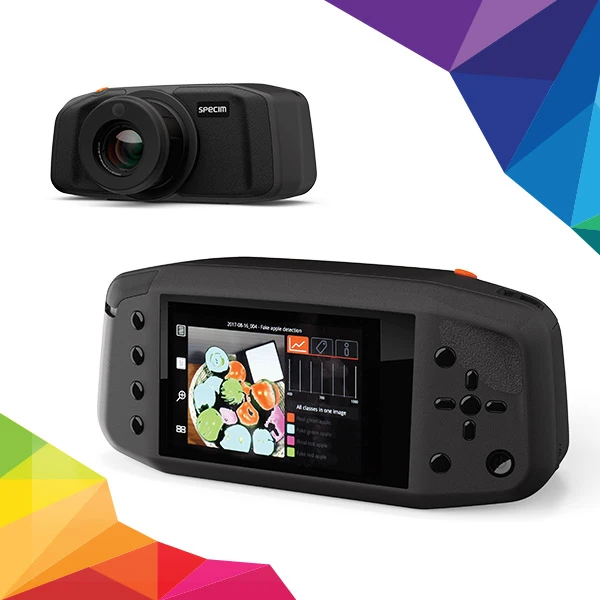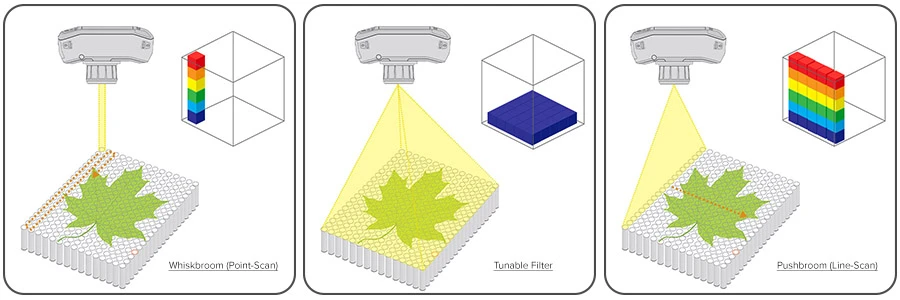Guide to Hyperspectral Camera Selection

Hyperspectral imaging (HSI), initially used for space exploration and earth observation, has become increasingly popular in various industrial and scientific fields. HSI can capture the full spectral and spatial information of a target simultaneously, a combination of both digital imaging and spectral measurement. With its capability, HSI offers many new possibilities and is rapidly utilized in various research and industrial applications, including food quality control, agriculture and vegetation studies, recycled plastic and waste sorting, pharmaceutical quality assurance, skin tumor diagnostics, etc.
HSI has shown to be a viable solution for many applications, and one of the building blocks of an effective HSI system is to have the right hyperspectral camera that will work best for your measurement tasks. There are several types of hyperspectral cameras like pushbroom, tunable filter, etc. They can be differentiated by how they acquire and generate hyperspectral data/image .
Whiskbroom (Point-Scan)
Whiskbroom-based hyperspectral cameras capture one single pixel at a time. Hyperspectral data cube is typically built up through raster scanning across the sample. While capable of achieving high spectral resolution, it has a slow image acquisition speed.
Tunable Filter
Tunable filter hyperspectral cameras capture the spatial information of one spectral wavelength band at a time. Hyperspectral data cube is generated through scanning all the spectral wavelength bands. It is fast in image acquisition but often has difficulty getting co-registered spectrum, resulting in complicated data processing, unreliable spectral signatures, etc.
Pushbroom (Line-Scan)
The pushbroom-based hyperspectral cameras offer fast image acquisition and high spectral resolution and are suitable for on-line applications like food inspection, etc. They capture one line of pixels each time and build up the hyperspectral data cube by scanning the line across the sample. As all spectral bands are scanned simultaneously from the same position, they will have no trouble achieving co-registered spectrum.

Aside from selecting the right hyperspectral camera, factors like spectral range, illumination, light collection efficiency, etc., should also be considered before setting up an HSI system. Check out this guide to learn more.
Specim, a pioneer and global leader in HSI technology, has a broad selection of pushbroom based hyperspectral cameras, like Specim IQ, etc., that covers the spectral wavelength range from visible to long wavelength infrared (LWIR). Watch this video learn more about how Specim pushbroom based hyperspectral cameras works.
Wish to learn more about HSI or need help implementing HSI system for your application? Contact us for a free consultation with our experts now.
